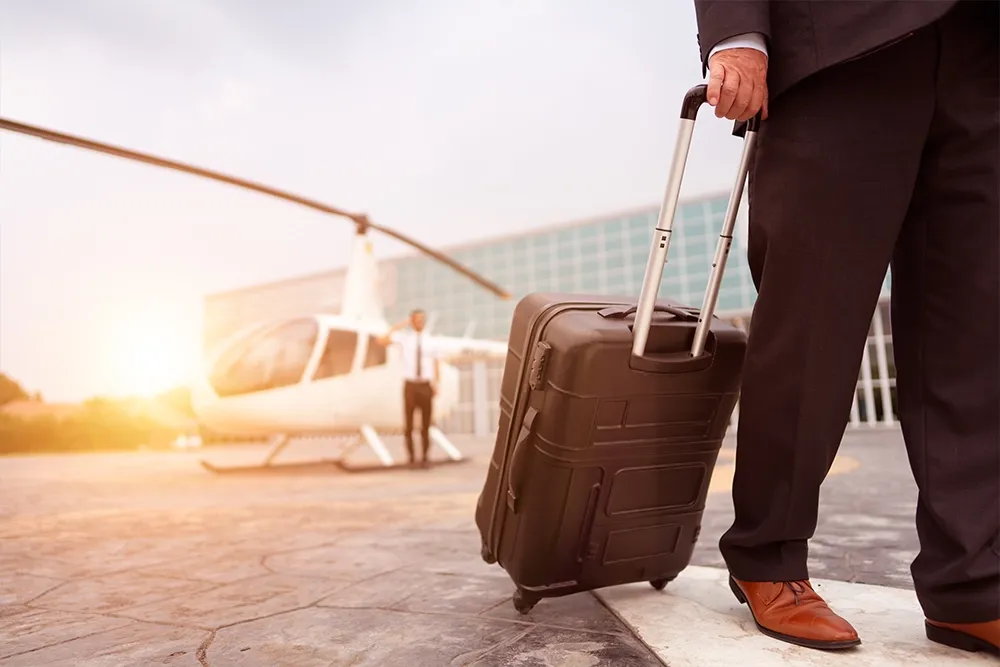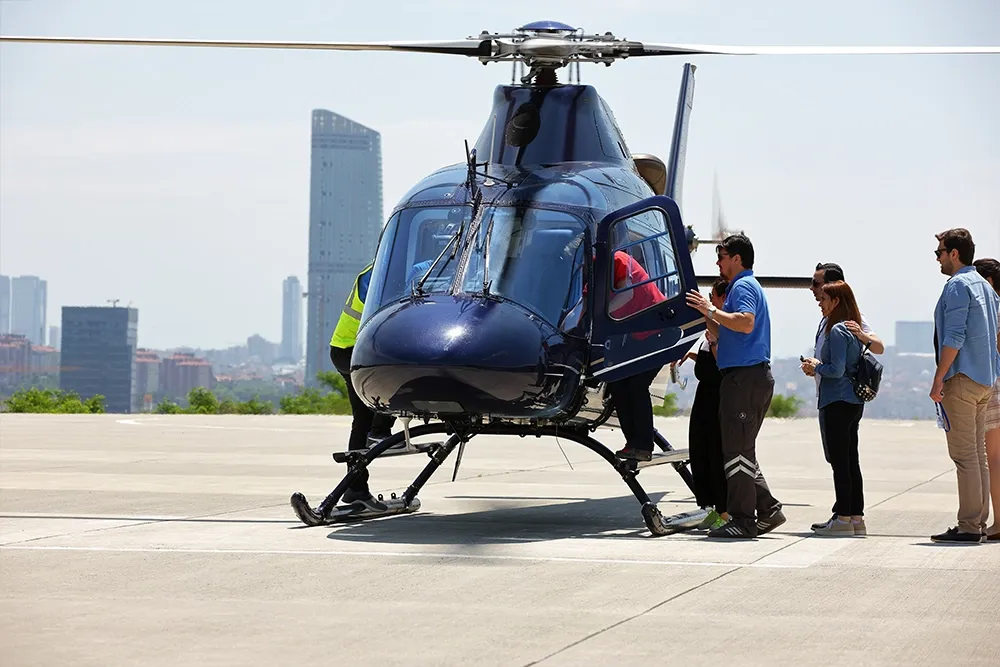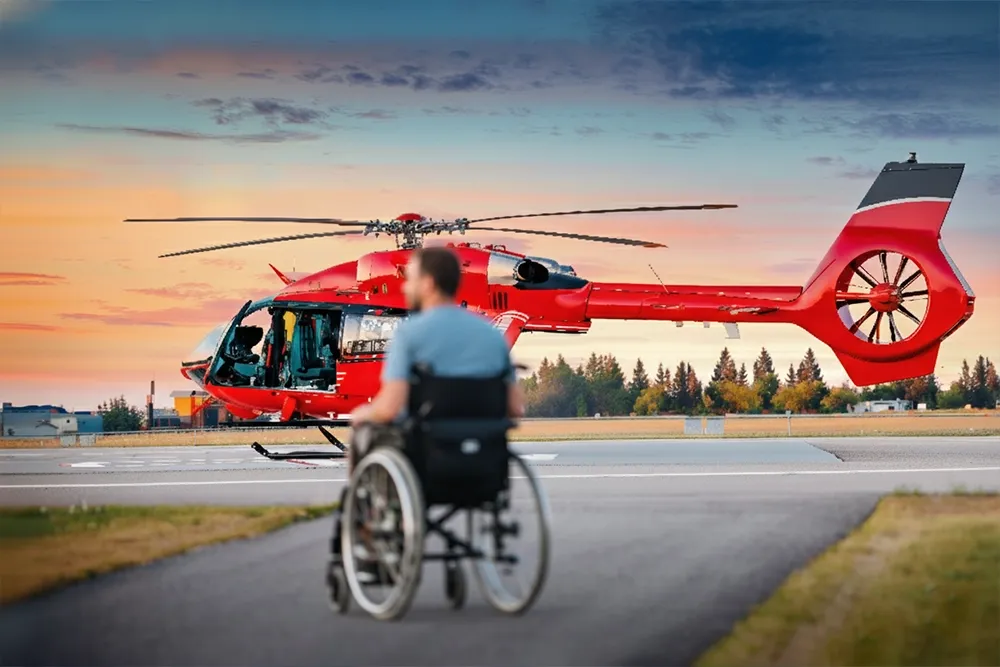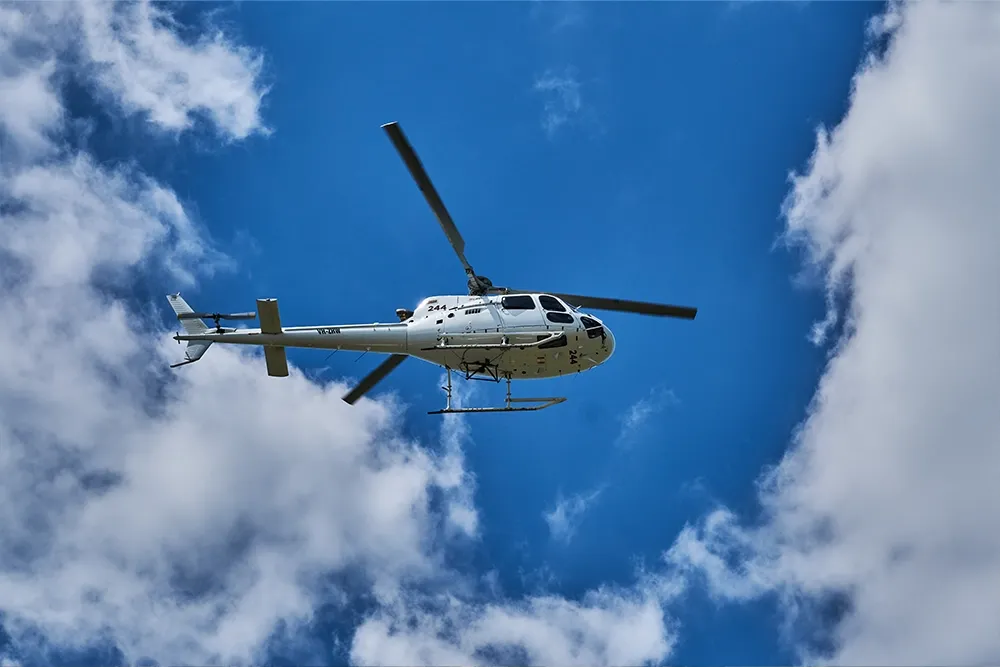Helicopter tours are unforgettable, but when it comes to luggage, even a tiny mistake can get you grounded. This guide offers real-world heli tour luggage tips, a detailed luggage guide, and advice on how to handle luggage on a heli tour while following the latest baggage rules and guidelines, especially for a helicopter ride in Dubai.
Flying Light - The Art of Packing for a Helicopter Ride
If you’ve ever tried boarding a helicopter with your regular travel bag, you’ve likely been stopped before take-off. As of 2025, operators across the world, from Dubai to the Maldives and the Grand Canyon, have tightened luggage restrictions due to increased safety standards and balance regulations.
Unlike airplanes, helicopters are extremely sensitive to weight and balance. Every extra kilo affects flight safety, which is why packing for a heli tour isn’t about convenience, it’s about precision.
Why Are Helicopter Luggage Rules So Strict?
The science is simple. A helicopter’s balance depends on evenly distributed weight; passengers, fuel, and equipment combined. Even a light bag in the wrong spot can disturb that equilibrium.
Aviation experts from the European Union Aviation Safety Agency (EASA) highlight that “small aircraft like helicopters operate within much narrower weight tolerances compared to fixed-wing planes.”
In short, packing light isn’t a suggestion, it’s a safety protocol.
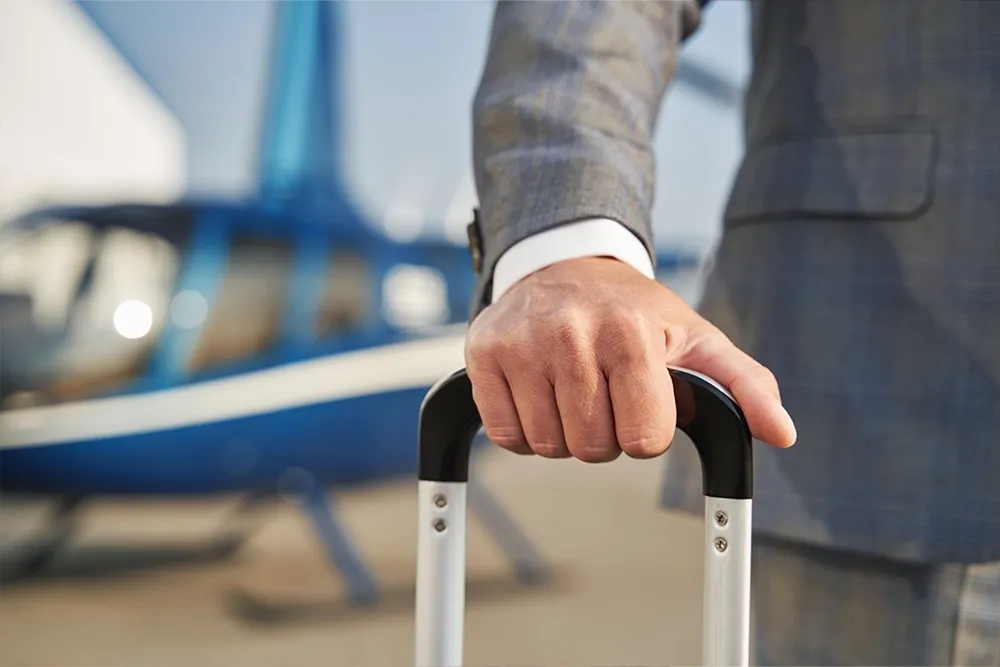
Helicopter Tour Baggage Rules - What Operators Really Allow
Across reputable operators such as Beno the consensus is clear: large bags, purses, and backpacks are not allowed inside the cabin.
According to the policy for the helicopter luggage rules, passengers can only carry small personal items; phones, cameras, or necessary medical gear. Everything else must be stored in a secure locker before boarding. Weight per passenger is also capped at 115 kg, including clothing and handheld items.
Also no hats, scarves, handbags, or large cameras. Some companies a allows a soft bag under 11.3 kg (25 lbs), but this is the exception rather than the rule. Don’t assume international helicopter tours follow airline baggage logic. Most don’t.
Heli Tour Luggage Tips That Actually Work
Keep your packing list to three items: your phone, ID, and sunglasses. If you’re carrying prescription medication or critical documents, confirm in advance whether you can keep them in a waist pouch.
Instead of a backpack, wear travel jackets or pants with zippered pockets. I personally use a lightweight vest with inner compartments, it holds everything from my GoPro to spare batteries without needing a bag.
Leave Cameras Lenses Behind
Dubai’s Civil Aviation Authority restricts lenses above 400 mm unless pre-approved. If you’re planning a helicopter ride Dubai, call your operator beforehand to check if your equipment qualifies.
Arrive Early for Check-In
Most operators recommend arriving 45 minutes before take-off for ID verification and luggage screening. HeliDubai and Falcon Heli Tours both follow this policy. Showing up late with bulky luggage could mean missing your slot entirely.
Be Honest About Your Weight
Weight distribution is meticulously calculated. Inflating or under-reporting your body weight might affect seating balance and overall safety. Many operators will re-weigh guests discreetly during check-in—don’t be surprised, it’s normal.
Label and Lock Everything You Leave Behind
Helipad storage is generally secure, but labeling ensures your bag is easy to identify post-flight. In Dubai, locker facilities are managed by the tour provider and supervised by staff.
Helicopter Ride Dubai - The Latest Luggage Guidelines
Dubai remains one of the top destinations for helicopter tours, thanks to the skyline views of Burj Khalifa, Palm Jumeirah, and the Arabian Gulf.
Here’s what applies as of October 2025, verified through official operator pages:
- Only essential personal items allowed; all other bags must stay in lockers. Cameras permitted, but no selfie sticks or long lenses.
- Strictly no handbags, hats, or scarves on board.
- Passengers must present a valid ID; check-in opens 45 minutes before departure.
- Weight policy: Maximum per passenger 115 kg; groups are seated based on weight distribution.
If you have special equipment (like professional cameras or drone gear), obtain written approval at least 24 hours before your flight. All policies can be found on the respective company websites, and links are updated regularly.
Safety Meets Simplicity
Packing light doesn’t mean compromising comfort; it enhances it. The more clutter-free your flight, the more you’ll focus on the view rather than your bag. For most operators, this simplicity is part of the luxury experience. When you’re hovering above Dubai Marina or the Burj Al Arab, the last thing you want is a bulky backpack shifting on your lap.

As aviation journalist Lara O’Donnell writes in the Middle East Travel Review:
“The best helicopter experiences are those where passengers are unburdened—physically and mentally. Less baggage equals more freedom.”
The Freedom of Flying Light
A helicopter tour isn’t just about seeing the world differently, it’s about experiencing it differently. Packing light makes that possible. Every gram you leave behind gives you more space for wonder.
So, before your next helicopter ride Dubai, remember: the sky rewards simplicity. Leave the luggage on the ground, lift off with ease, and let the city unfold beneath you, unburdened, both in spirit and in weight.
FAQs
- What is the 5-4-3 rule for packing?
It’s a minimalist packing method suggesting you bring 5 tops, 4 bottoms, 3 accessories, 2 pairs of shoes, and 1 hat—perfect for light travelers.
- What is the 3-1-1 rule for luggage?
It’s the TSA liquid rule: you can carry liquids in 3.4-ounce bottles, all fitting into 1 quart-sized bag, with 1 bag per passenger.
- What are the 5 biggest packing mistakes to avoid?
Overpacking, skipping weather checks, ignoring baggage limits, packing valuables in checked bags, and forgetting chargers or adapters.
- How much should you tip for a helicopter tour?
In Dubai and most destinations, 10–15% of the tour cost or AED 20–50 per person is considered a polite tip for the pilot and crew.
